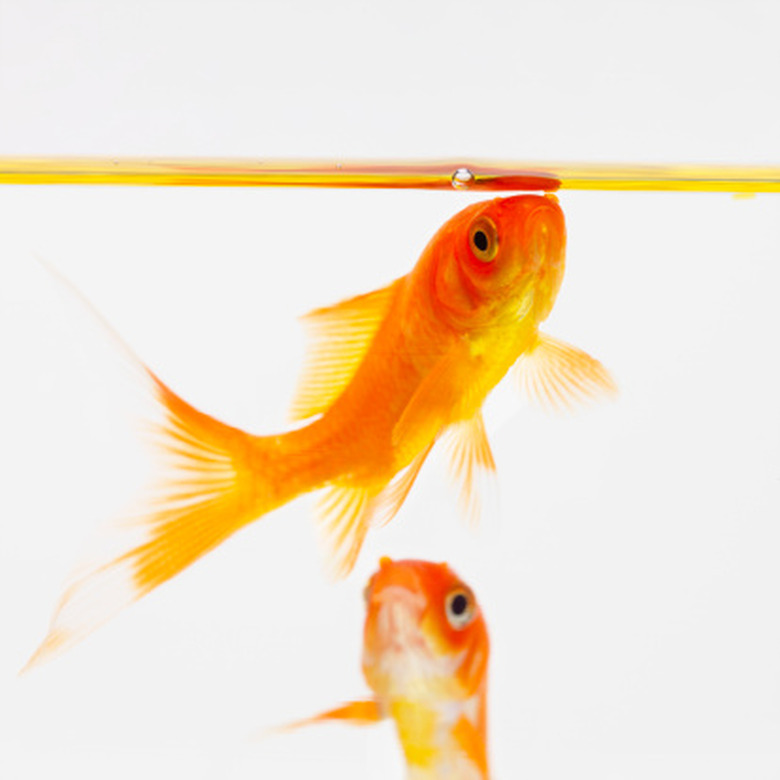Signs Of Overfeeding Goldfish
Goldfish are a common cold water and freshwater fish. The fish come in an array of colors, including red, brown, black, yellow and orange. If looked after properly, it can live for up to 20 years. A goldfish can constantly eat and it's up to you to control the amount of food it has access to. Overfeeding your goldfish can lead to serious health problems. There are several signs in your fish and tank that show you're overfeeding.
Cloudy Water
Cloudy Water
If you overfeed your fish you can compromise the quality of water it's living in. Cloudy water is a sign that something organic is rotting in the tank. This is usually the result of uneaten food having fallen to the bottom of the tank and rotting. Clean the rotting food out and stop feeding your fish for a few days. If the water clears on its own you can start to regulate the times you feed your goldfish.
Swimming Upside Down
Swimming Upside Down
A critical sign your goldfish is being overfed is if it's flipped over and swimming upside down. This shows the fish has a problem with its swimbladder. The swimbladder controls the fish buoyancy and is affected if a fish is fed too much. If it is overfed it will become constipated, which stops the pneumocystic duct from inflating and deflating adequately. As a result, the fish will flip over, sink to the bottom of the tank or float at the top. Stop feeding it for a few days to help alleviate its constipation.
Bloating and Feces
Bloating and Feces
Overfeeding your fish will lead to constipation. A sign that it is feeling constipated is the swelling of the stomach. You may also notice it's not eating as it usually does and has long feces. You can help your goldfish to ease its constipation by changing its diet. Peas act as a mild laxative for your pet. Feed your fish peas only for a few days to help stop its constipation. Also, make sure to include more fiber in its diet to keep its bowel movements regular.
Algae
Algae
The growth of algae is another sign you may be overfeeding your fish. Algae grows when there is a rise in phosphate and nitrate levels in your tank. This comes from rotting food that has collected at the bottom. A little bit of algae growth is normal for any tank, but if there's a lot you could have a problem. While a goldfish will find algae a good source of nutrients, too much in your tank will lower oxygen levels. This is a danger for your fish because it needs oxygen to survive. Clean the tank of excess algae and make sure you give your fish enough food that it can consume without leaving any.
